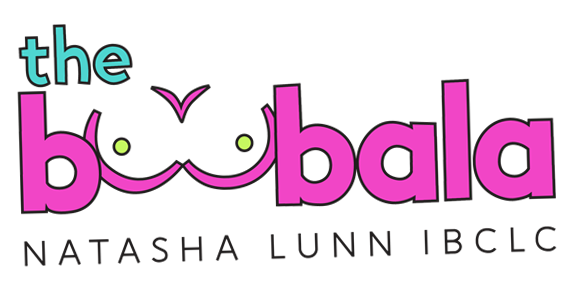Page Content
- Is it safe to put honey on nipples?
- What to put on nipples to taste bad?
- What kills yeast on nipples?
- Is honey good for your breasts?
- What can I rub on my nipples?
- What can I apply on my nipples?
- Can honey lighten nipples?
- How can I lighten my nipples fast?
- What does yeast infection on nipples look like?
- Can I put apple cider vinegar on my nipples?
Can I Put Honey on My Nipples?
The question of whether it’s safe to apply honey to your nipples, particularly for breastfeeding mothers, has garnered attention for its potential benefits and risks. Honey, known for its natural healing properties, is often considered in the context of soothing cracked or sore nipples, a common issue for nursing mothers.
Medical-Grade Honey and Breastfeeding
Medical-grade honey, particularly varieties like Manuka honey, has been recognized for its antibacterial and healing properties. It is often used to treat wounds and can be beneficial for sore or cracked nipples. According to experts, using medical-grade honey on cracked nipples is generally considered safe for breastfeeding mothers, as it is unlikely to harm the infant. This type of honey can help promote healing and reduce the risk of infection, making it a viable option for those experiencing discomfort.
Considerations for Use
While honey can be beneficial, there are important considerations to keep in mind. It is crucial to ensure that the honey used is medical-grade, as regular honey may not have the same properties and could pose risks, especially if ingested by infants. The American Academy of Pediatrics advises against giving honey to babies under one year old due to the risk of botulism, a rare but serious illness caused by bacteria that can thrive in honey. Therefore, while applying honey to the nipples may help with healing, care should be taken to avoid any transfer of honey to the baby during breastfeeding.
Alternative Uses and Benefits
Beyond its application for nipple care, honey has a variety of uses. It is commonly used to soothe coughs and can be applied topically for wound healing. Its natural properties make it a popular choice for those seeking holistic remedies. However, it is essential to differentiate between medical-grade honey and regular honey, as the former is specifically processed to ensure safety and efficacy for medical use.
Conclusion
In summary, applying medical-grade honey to sore or cracked nipples can be a safe and effective way to promote healing for breastfeeding mothers. However, it is vital to use the right type of honey and to be cautious about the potential risks associated with honey exposure to infants. As always, consulting with a healthcare provider before starting any new treatment is advisable to ensure the best outcomes for both mother and child.
Is it safe to put honey on nipples?
In fact, the manufacturer of MediHoney created an infographic that specifically states that it is safe for use in breastfeeding moms. They recommend that the nipple be cleansed with warm water after nursing to remove the baby’s saliva before application of MediHoney to the nipple and areola.
What to put on nipples to taste bad?
It refers to applying something with a strong flavor, such as garlic, mustard, vinegar, or spicy products, on the breast to stop the toddler from suckling.
What kills yeast on nipples?
Treatment usually includes topical antifungal medications (like nystatin cream). Rarely, you may need oral antifungal medication (fluconazole). These treatments aren’t appropriate for nipple pain, itching and rashes around your nipple.
Is honey good for your breasts?
Preclinical studies have revealed a beneficial impact of honey on both bone health (microstructure, strength, oxidative stress) and breast tissue health (breast cancer cell proliferation and apoptosis, tumor growth rate, and volume).
What can I rub on my nipples?
Placing a bandage or petroleum-based ointment over your nipples can reduce chafing or rubbing. If you’re nursing or pumping breast milk, visiting a lactation consultant may be beneficial.
What can I apply on my nipples?
How Can I Treat Cracked Nipples?
- Apply Freshly Expressed Breast Milk. Smoothing freshly expressed breast milk onto cracked nipples may help them heal by offering antibacterial protection.
- Warm Compress.
- Salt Water Rinse.
- Apply Medical Grade Lanolin Ointment.
- Change Nursing Pads Frequently.
Can honey lighten nipples?
A mixture of milk and honey can also be applied to the Nipple Area to Help Lighten Pigmentation. Both milk and honey have natural moisturizing and exfoliating properties that can contribute to gradual lightening. Leave the mixture on for a few minutes before rinsing off gently.
How can I lighten my nipples fast?
Honey and Turmeric Paste. A combination of honey and turmeric can create a paste that helps lighten the skin and reduce pigmentation. Mix equal parts of honey and turmeric powder to form a thick paste. Apply the paste to the desired area and leave it on for 15-20 minutes before rinsing off.
What does yeast infection on nipples look like?
Signs of nipple and breast thrush
your nipples may appear bright pink; the areola may be reddened, dry or flaky. Rarely a fine white rash may be seen. nipple damage (e.g. a crack) that is slow to heal. signs of thrush may be present in your baby’s mouth or on your baby’s bottom, or both.
Can I put apple cider vinegar on my nipples?
Wash bras, nursing pads, or any clothing item that comes in contact with your nipples in hot water with bleach and dry on the hot setting or dry in the sun. Rinse your nipples with a solution of 1 tablespoon apple cider vinegar to 1 cup of water after each feeding using a cotton pad or ball.

